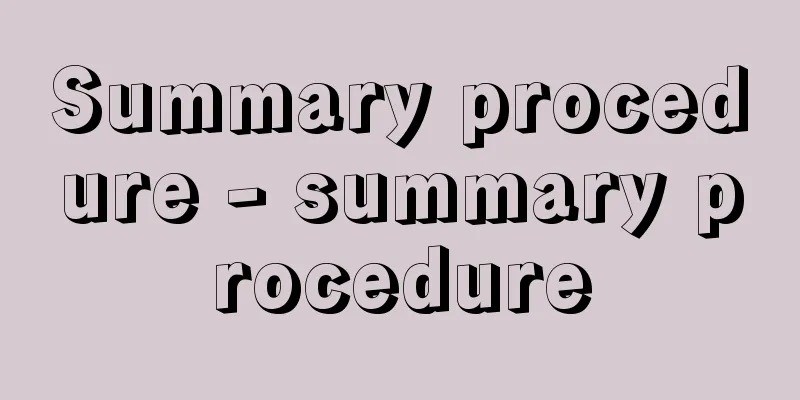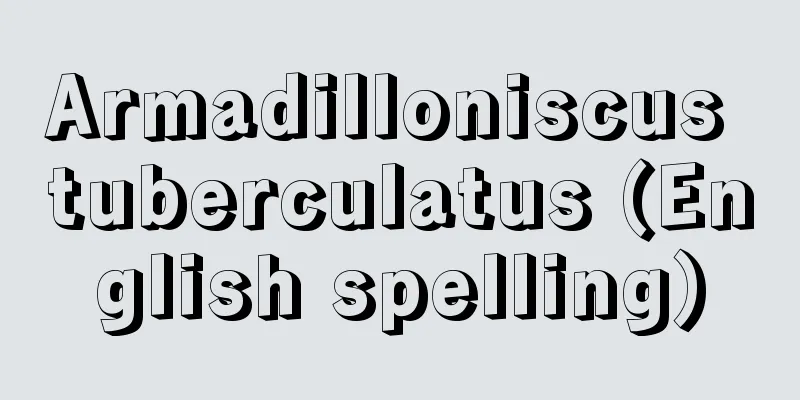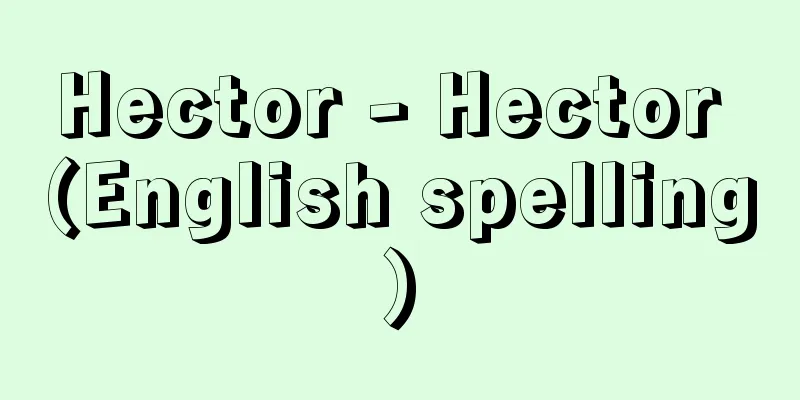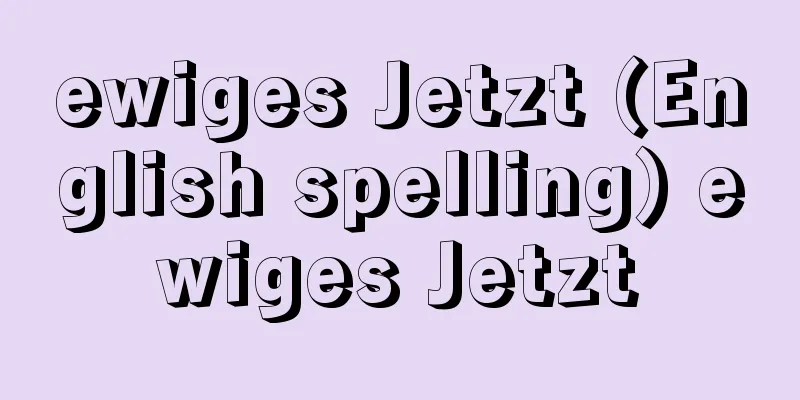Summary procedure - summary procedure

|
This is a procedure in which a summary court, at the request of a prosecutor, imposes a fine or a penalty of up to 1 million yen by summary order, based on a document review before a public trial. In this case, the court may suspend the execution of the sentence, impose confiscation, and take other incidental measures such as collection of a fine (Article 461 of the Code of Criminal Procedure). Since it is a simplified procedure without a public trial, it is generally called a summary trial or summary indictment. Summary procedures were first adopted in the Criminal Summary Procedure Law (Law No. 20 of 1913). It is said to have been modeled mainly on the criminal summary procedures in Germany, which are based on the criminal summary procedures ordered by district court judges. It was later included in Book 7 of the old Code of Criminal Procedure and inherited by Book 6 of the current Code of Criminal Procedure (Articles 461-470). Article 37, paragraph 1 of the Constitution guarantees the defendant the right to a speedy and public trial by an impartial court. There have been claims that the provisions on summary procedures allow for a trial by a document review without public access, and are therefore unconstitutional. On the other hand, the prevailing view is that summary orders are a procedure to ascertain whether the defendant has any objections, and even if an order is issued after ascertaining that there are no objections, if the defendant files a petition for a formal trial, the way is open to a new trial through normal procedures, so it does not necessarily deprive the defendant of the right to a public trial. Case law has also found this procedure to be constitutional. In 2016, 263,608 people were fined or fined through summary court procedures, 65.8% of which were for violations of the Road Traffic Act, and 17.6% for negligent driving resulting in death or injury. In 2006, fines were newly established for theft and obstruction of public duties, but in 2016, 6,316 people were fined for theft and 708 for obstruction of public duties through summary procedures (2017 White Paper on Crime). [Ichiro Uchida and Morikazu Taguchi, April 18, 2018] [Reference] | |Source: Shogakukan Encyclopedia Nipponica About Encyclopedia Nipponica Information | Legend |
|
簡易裁判所が、検察官の請求により、公判前に、書面審理により、略式命令で、100万円以下の罰金または科料を科する手続をいう。この場合には、刑の執行猶予をし、没収を科し、その他追徴など付随の処分をすることができる(刑事訴訟法461条)。公判を開かない簡略な手続であることから、一般に略式裁判あるいは略式起訴ともよばれる。略式手続は、刑事略式手続法(大正2年法律第20号)で初めて採用された。主としてドイツの区裁判所判事の科刑命令による刑事略式手続にその範をとったものとされている。その後、旧刑事訴訟法第7編に収録され、現行刑事訴訟法第6編(461条~470条)に承継された。憲法第37条第1項は、被告人に対し、公平な裁判所の迅速な公開裁判を受ける権利を保障している。そこで、この略式手続に関する規定は非公開の書面審理による裁判を認めるものであって、違憲であるという主張もあった。これに対して通説は、略式命令に対しては被告人側に異議の有無を確かめる手続であり、異議のないことを確かめて命令を出しても、被告人側から正式裁判の申立てがあれば、通常の手続で新たに審判する道も開かれているので、それはかならずしも被告人に対し公開裁判を受ける権利を奪うことにはならないとしている。判例もこの手続を合憲としている。簡易裁判所の略式手続によって2016年(平成28)中に罰金または科料に処された者は26万3608人であり、道路交通法違反が65.8%、過失運転致死傷等が17.6%であった。なお、2006年に窃盗、公務執行妨害の罪に罰金刑が新設されたが、2016年に略式手続により窃盗で罰金に処せられた者は6316人、公務執行妨害が708人であった(2017年版『犯罪白書』)。 [内田一郎・田口守一 2018年4月18日] [参照項目] | |出典 小学館 日本大百科全書(ニッポニカ)日本大百科全書(ニッポニカ)について 情報 | 凡例 |
<<: Predatory agriculture - Ryakudatsunougyou
>>: Summary action - summary action
Recommend
Gilan (English spelling)
The name of a region in Iran on the southwestern c...
Aldehyde - aldehyde
A general term for compounds with an aldehyde gro...
The myth of the descent of the grandson of heaven
This myth tells the story of how the Son of the Su...
Autumn fern (English spelling)
…In the narrow sense, Benishida is also found in ...
Izumisue - Izumisue
...When borrowing from another family, a pebble i...
Conceptionism
...A child born to a man and a woman who are in a...
Kiefer, A.
...The United States produced young swimmers such...
Kitoi culture
A late Neolithic culture in the Baikal region of R...
Akatsuki Kanbayashi
Novelist. Born in Kochi Prefecture on October 6, ...
Purple Robe Incident
This incident shows the Shogunate's policy of...
"Onna Rakuami" - Onna Rakuami
…The fact that the concubine's residence was ...
NKVD - NKVD
NKVD (People's Commissariat for Internal Affa...
Land tortoise (land turtle)
A general term for land turtles belonging to the f...
Kuinji Temple
…She is a legendary old nun who reached the age o...
Machine binding - Machine binding
…The signatures for one book are called a “piece....









